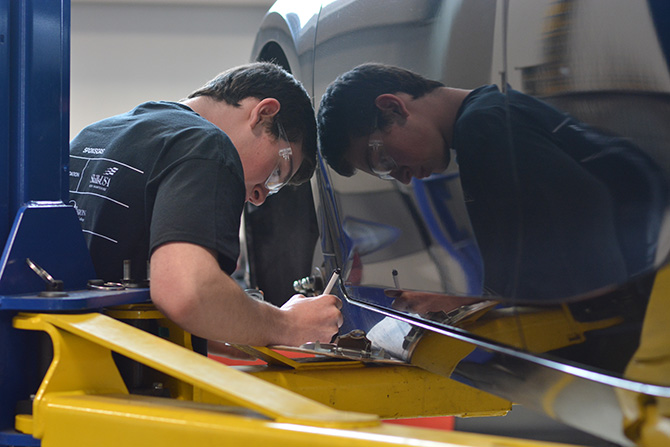The U.S. automotive industry employs nearly two million people. At some point in their jobs and careers, many employees will be required to work alone and in circumstances where help might not be accessible in an accident.
Defining the Scope of Working Alone
What does it mean to “work alone?” Is it when you are the only employee working in a separate geographic location and have no coworkers around? Or is it when you perform your job near coworkers who cannot hear you if you call for help? Both of these familiar occupational environments are correct, requiring the person to work in a situation in which support is not quickly available should they need it.
Identifying Lone Working Scenarios
Within the realm of the automotive industry, numerous scenarios classify employees as lone workers. These can include tasks such as servicing or repairing vehicles at a customer’s location, delivering vehicles or parts to residences or businesses, acquiring parts from external sources or conducting operations in remote corners of expansive manufacturing facilities.
Dangers of Working Alone
Despite the familiarity of such working environments, they pose several distinct occupational hazards, especially for those working alone. These risks can be broadly categorized into communication challenges, location-tracking obstacles and the potential threat of workplace violence.
Navigating Communication Challenges
The most significant safety hazard is unreliable or nonexistent communication with the lone worker who may be in a location that does not have access to cellular and Wi-Fi networks. The lack of important information with limited communication can seriously impact the success of an emergency response or rescue.
Addressing Location-Tracking Hurdles
Parallel to the need for robust communication, the ability to accurately pinpoint the location of lone workers is crucial for facilitating prompt emergency responses. In critical situations, every second counts, and knowing the precise location can make a pivotal difference in averting potential disasters.
Workplace Violence Challenges
You can be considered a lone worker even when in the presence of customers and members of the public. This is because occupational violence and assault are unfortunate realities and occupational hazards for those working with and around other people, away from coworkers.
Safeguarding Lone Workers with SafetyLine
These safety hazards that lone workers face make them more vulnerable than employees in pairs or teams because it can be difficult for them to request urgent help. For lone workers, SafetyLine provides a reliable channel of communication for automotive workers to easily request immediate assistance while communicating their location to the employer or safety monitor. A “safety line” of communication is secured in highly effective automated safety check-ins at predetermined times that confirm the safety of the lone worker using a lone worker solution.
Empowering Proactive Safety Measures
Beyond its location-tracking capabilities, SafetyLine streamlines safety protocols through automated check-ins, reliable text and voice messaging functionalities, and detailed safety reports. Such proactive measures significantly reduce the likelihood of accidents and enhance overall workplace safety.
Cultivating a Culture of Security and Efficiency
By integrating SafetyLine into your operations, you prioritize the well-being of your workforce and foster a culture of security that ultimately translates into increased productivity and employee satisfaction. As your team expands and evolves, SafetyLine seamlessly adapts to meet your changing safety requirements, making it a sound long-term investment in your organization’s future. Ultimately, SafetyLine serves as a reliable partner in ensuring the safety and well-being of lone workers in the automotive industry, paving the way for a secure and efficient work environment.
For more information, visit safetylineloneworker.com.







